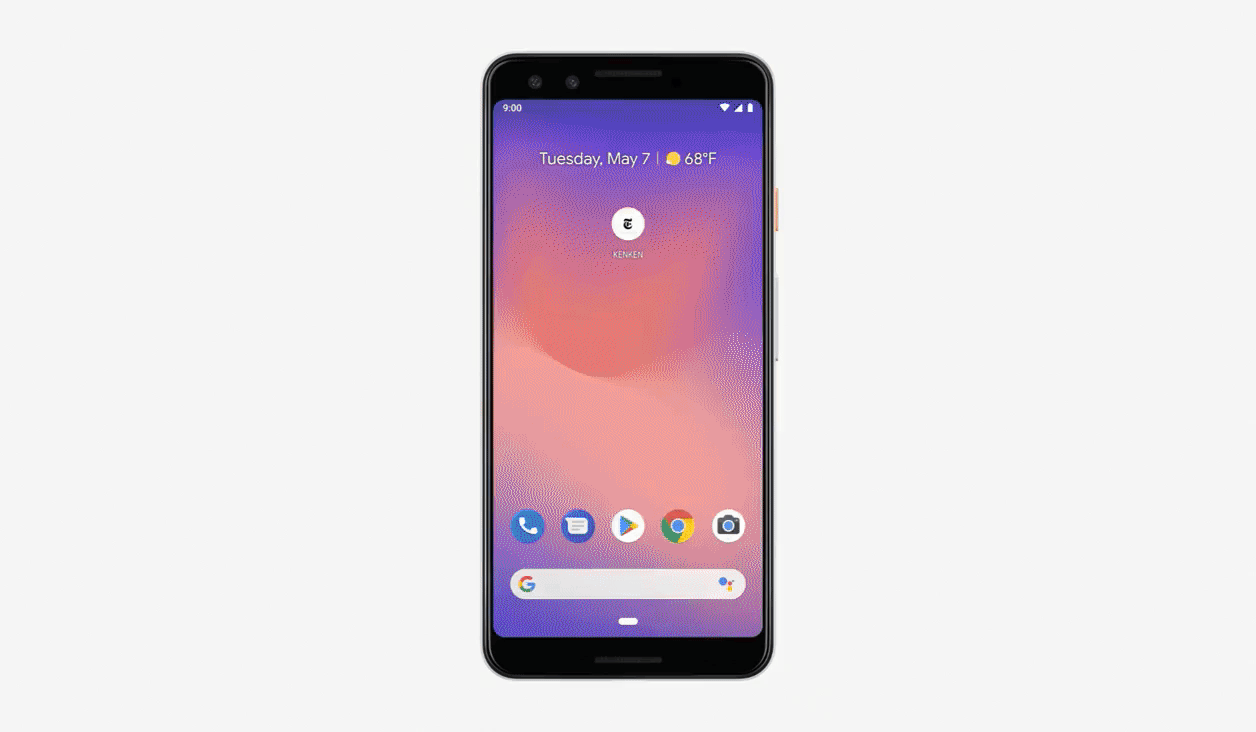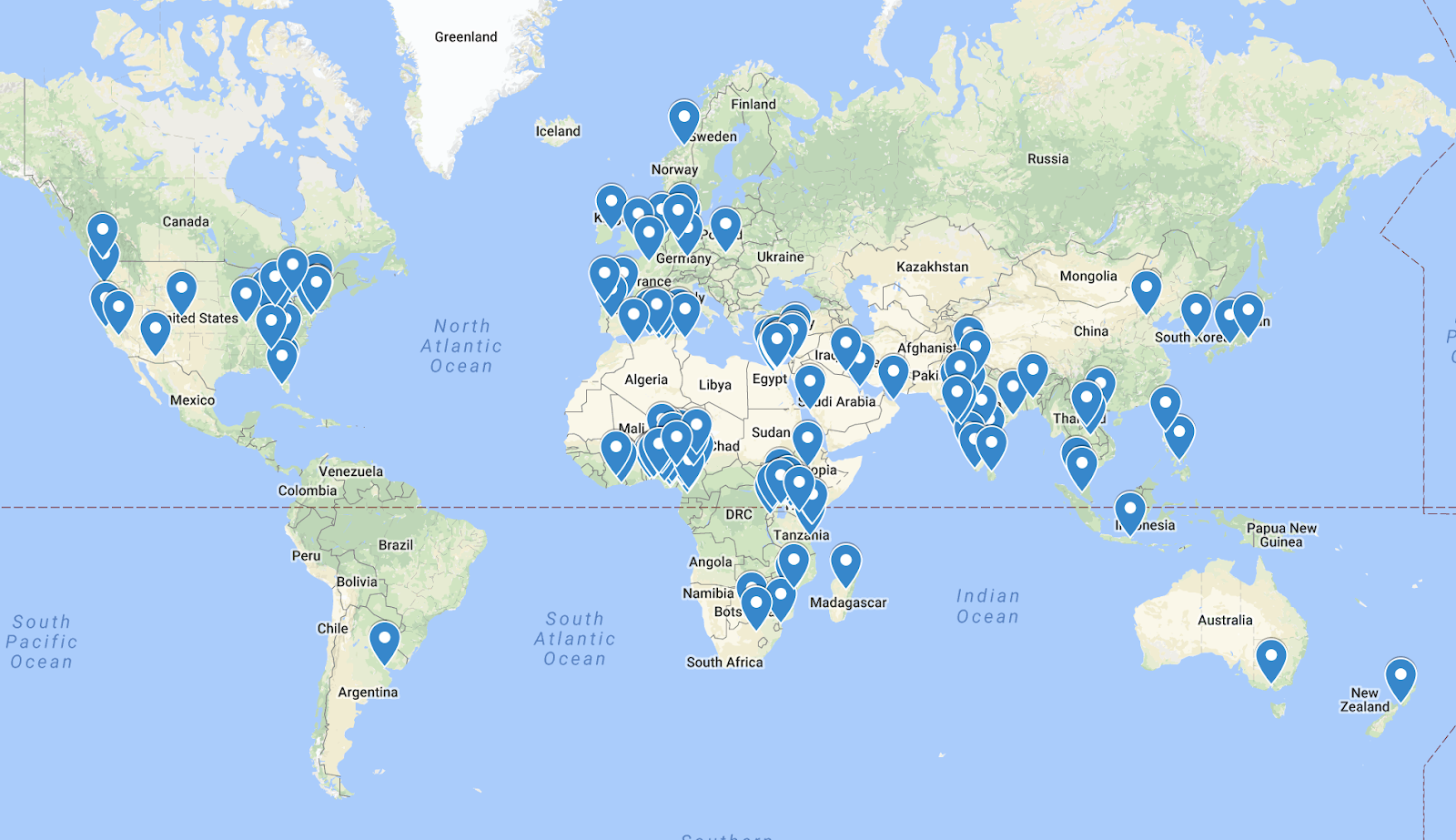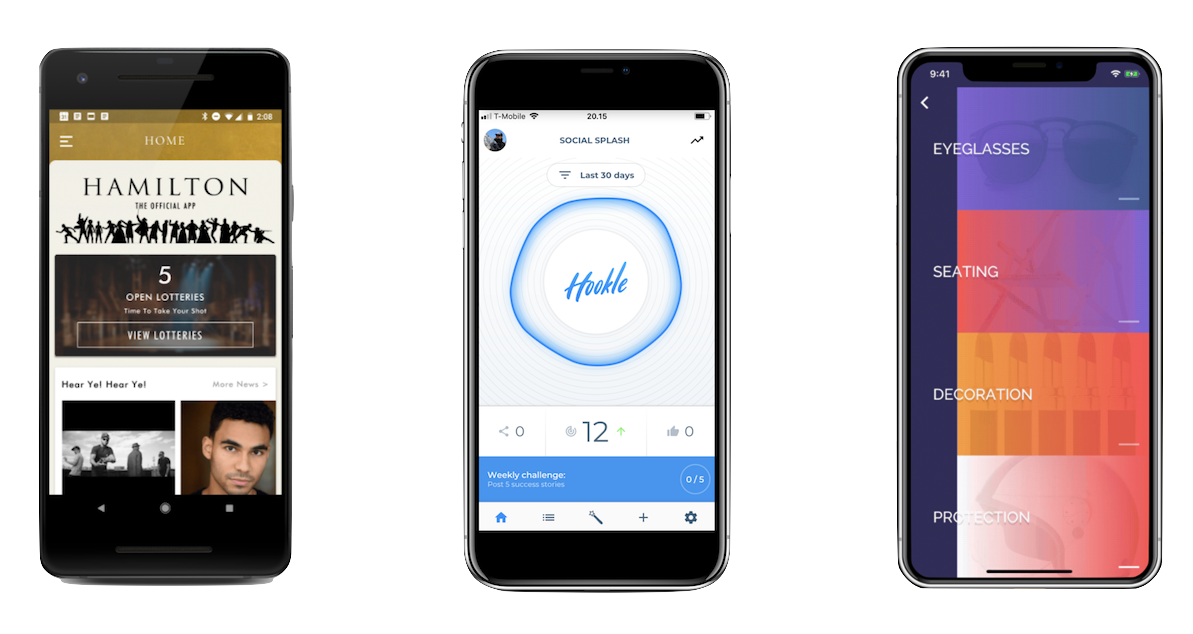Posted by the Flutter Team
Today marks an important milestone for the Flutter framework, as we expand our focus from mobile to incorporate a broader set of devices and form factors. At I/O, we’re releasing our first technical preview of Flutter for web, announcing that Flutter is powering Google’s smart display platform including the Google Home Hub, and delivering our first steps towards supporting desktop-class apps with Chrome OS.
From Mobile to Multi-Platform
For a long time, the Flutter team mission has been to build the best framework for developing mobile apps for iOS and Android. We believe that mobile development is ripe for improvement, with developers today forced to choose between building the same app twice for two platforms, or making compromises to use cross-platform frameworks. Flutter hits the sweet spot of enabling a single codebase to deliver beautiful, fast, tailored experiences with high developer productivity for both platforms, and we’ve been excited to see how our early efforts have flourished into one of the most popular open source projects.
As we started to home in on our 1.0 release last year, we began experimenting with broadening the scope of Flutter to other platforms. This was triggered both by internal teams within Google who are increasingly relying on Flutter, as well as the latent potential of the Dart platform for delivering portable experiences. In particular, a small team who were already building a web framework for Dart for internal usage started an exploratory project (codename “Hummingbird”) to evaluate the technical merits of porting the Flutter engine to support the standards-based web.
The results of this project were startling, thanks in large part to the rapid progress in web browsers like Chrome, Firefox, and Safari, which have pervasively delivered hardware-accelerated graphics, animation, and text as well as fast JavaScript execution. Within a few months of beginning the project, we had the core Flutter framework primitives working, and soon after we had demos running on mobile and desktop browsers. Along with Dart’s long pedigree of compiling for the web, this proved that we could also bring the Flutter framework and apps to run on the web.
In parallel, the core Flutter project has been making progress to enable desktop-class apps, with input paradigms such as keyboard and mouse, window resizing, and tooling for Chrome OS app development. The exploratory work that we did for embedding Flutter into desktop-class apps running on Windows, Mac and Linux has also graduated into the core Flutter engine.
A Portable UI Framework for All Screens

It’s worth pausing for a moment to acknowledge the business potential of a high-performance, portable UI framework that can deliver beautiful, tailored experiences to such a broad variety of form factors from a single codebase.
For startups, the ability to reach users on mobile, web, or desktop through the same app lets them reach their full audience from day one, rather than having limits due to technical considerations. Especially for larger organizations, the ability to deliver the same experience to all users with one codebase reduces complexity and development cost, and lets them focus on improving the quality of that experience.
With support for mobile, desktop, and web apps, our mission expands: we want to build the best framework for developing beautiful experiences for any screen.
Flutter for Web
This week, we are releasing the first technical preview of Flutter for the web. While this technology is still in development, we are ready for early adopters to try it out and give us feedback. Our initial vision for Flutter on the web is not as a general purpose replacement for the document experiences that HTML is optimized for; instead we intend it as a great way to build highly interactive, graphically rich content, where the benefits of a sophisticated UI framework are keenly felt.
To showcase Flutter for the web, we worked with the New York Times to build a demo. In addition to world-class news coverage, the New York Times is famous for its crossword and other puzzle games. Since avid puzzlers want to play on whatever device they’re using at the time, their development team was attracted to Flutter as a potential solution for their needs. Discovering that they could reach the web with the same code was a huge boon. At Google I/O this week, you can get a sneak peek of their newly refreshed KENKEN puzzle game, which runs with the same code on Android, iOS, web, Mac, and Chrome OS.

Here’s what Eric von Coelln, Executive Director of Puzzles at the New York Times has to say about their experiences with Flutter:
"The New York Times Crossword has more than 400,000 stand-alone subscriptions and is a daily ritual for puzzle solvers. Along with the Crossword, we’ve grown our portfolio of digital puzzles that reaches more than two million solvers each month.We were already beginning to explore Flutter as a potential solution to the challenge of quickly developing engaging, high-quality mobile experiences. Now the addition of being able to publish to web makes Flutter an even more appealing option to quickly deploy across all of our user platforms. This update of our old Flash-based KenKen game into a multi-platform playable experience is something we’re excited to bring to our solvers this year.”
There’s lots more to say about Flutter for web than we have space for here, so check out the dedicated article about Flutter for web on the Flutter blog.
At this early stage, we’re eager to get your feedback on how you’d like to use Flutter for web. We expect to rapidly evolve the code, with a particular focus on performance, and harmonizing the codebase with the rest of the Flutter project.
Flutter for Mobile Devices
The core Flutter framework also receives an upgrade this week, with the immediate availability of Flutter 1.5 in our stable channel. Flutter 1.5 includes hundreds of changes in response to developer feedback, including updates for new App Store iOS SDK requirements, updates to the iOS and Material widgets, engine support for new device types, and Dart 2.3 featuring new UI-as-code language features.
As the framework itself matures, we’re investing in building out the supporting ecosystem. The architectural model of Flutter has always prioritized a small core framework, supplemented by a rich package community. In the last few months, Google has contributed production-quality packages for web views, Google Maps, and Firebase ML Vision, and this week, we’re adding initial support for in-app payments. And with over 2,000 open source packages available for Flutter, there are options available for most scenarios.
One particularly exciting project that we’re announcing this week at I/O is the ML Kit Custom Image Classifier. Built using Flutter and Firebase, it offers an easy-to-use app-based workflow for creating custom image classification models. You can collect training data using the phone's camera, invite others to contribute to your datasets, trigger model training, and use trained models, all from the same app.

Flutter continues to grow in popularity and adoption. A growing roster of demanding customers including eBay, Sonos, Square, Capital One, Alibaba and Tencent are developing apps with Flutter. And they’re having fun! Here’s what Larry McKenzie, a senior developer at eBay had to say about Flutter:
“Flutter is fast! Features that once took us multiple days to implement can be finished in a single day. Many problems we used to spend a lot of time on, simply no longer occur. Our team can now focus on creating more polished user experiences and delivering functionality. Flutter is enabling us to exceed expectations!”
More broadly, LinkedIn recently conducted a study that showed Flutter is the single fastest-growing skill among software engineers, based on site members claiming it on their profile over the last 12 months. And in the recent 2019 StackOverflow developer survey, Flutter was listed as one of the most-loved developer frameworks.
Flutter for Desktop
Flutter is also being used on the desktop. For some months, we’ve been working on the desktop as an experimental project. But now we’re graduating this into Flutter engine, integrating this work directly into the mainline repo. While these targets are not production-ready yet, we have published early instructions for developing Flutter apps to run on Mac, Windows, and Linux.
Another quickly growing Flutter platform is Chrome OS, with millions of Chromebooks being sold every year, particularly in education. Chrome OS is a perfect environment for Flutter, both for running Flutter apps, and as a developer platform, since it supports execution of both Android and Linux apps. With Chrome OS, you can use Visual Studio Code or Android Studio to develop a Flutter app that you can test and run locally on the same device without an emulator. You can also publish Flutter apps for Chrome OS to the Play Store, where millions of others can benefit from your creation.
Flutter for Embedded Devices
As the final example of Flutter’s portability, we offer Flutter embedded on other devices. We recently published samples that demonstrate Flutter running directly on smaller-scale devices like Raspberry Pi, and we offer an embedding API for Flutter that allows it to be used in scenarios including home, automotive and beyond.
Perhaps one of the most pervasive embedded platforms where Flutter is already running is on the smart display operating system that powers the likes of Google Home Hub.

Within Google, some Google-built features for the Smart Display platform are powered by Flutter today. And the Assistant team is excited to continue to expand the portfolio of features built with Flutter for the Smart Display in the coming months; the goal this year is to use Flutter to drive the overall system UI.
Other Resources
We often get asked by developers how they can get started with Flutter. We are pleased today to announce a comprehensive new training course for Flutter, built by The App Brewery, authors of the highest-rated iOS training course on Udemy. Their new course has over thirty hours of content for Flutter, including videos, demos and labs, and with Google’s sponsorship, they are announcing today a time-limited discount of this course from the retail price of $199 to just $10.
Many developers are creating inspiring apps with Flutter. In the run-up to Google I/O, we ran a contest called Flutter Create to encourage developers to see what they could build with Flutter in 5KB or less of Dart code. We had over 750 unique entries from around the world, with some amazing examples that pushed what we imagine would be possible in such a small size.
Today, we’re announcing the winners, which can be found on flutter.dev/create. Congratulations to the overall winner, Zebiao Hu, who wins a fully-loaded iMac Pro worth over $10,000!
Flutter is no longer a mobile framework, but a multi-platform framework that can help you reach your users wherever they are. We can’t wait to see what you’ll build with Flutter on the web, desktop, mobile, and beyond!














 Posted by the Flutter Team at Google
Posted by the Flutter Team at Google 








